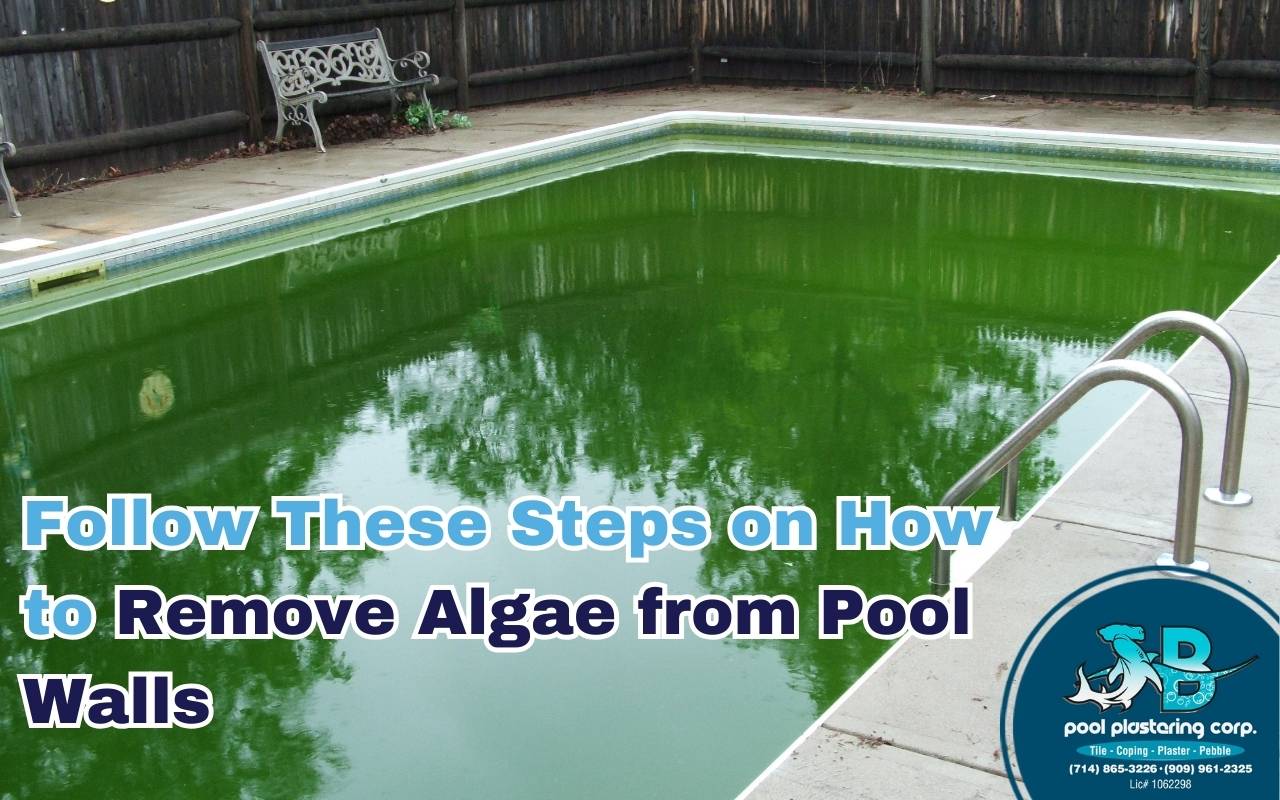
Follow These Steps on How to Remove Algae from Pool Walls
A beautiful pool is a backyard treasure. However, algae growth can quickly ruin the experience. Algae growth transforms an inviting swimming pool into a vast, disturbing green tint. While algae expand continuously, not knowing how to remove algae from pool walls indicates poor maintenance around the house.
It is essential to take care of your pool to keep the spores under control to help prevent a full-blown algae bloom. With this guide, you will learn practical strategies, prevention tips, and targeted treatments for keeping your pool clear and safe. Maintain constant pool testing and tackle problems as soon as they develop to minimize algae growth and keep the water clean.
Types of Pool Algae and Stains

Algae growth is the most obvious sign of poor pool maintenance. Different algae types require different treatments. Knowing the variety in your pool will help you succeed:
- Green algae – The most common type. It spreads quickly in warm water with poor circulation and turns the water into shades of green.
- Mustard algae – Appears as yellowish spots. It’s loose on the walls and brushes off easily, but resists chlorine and often returns if untreated.
- Black algae – Dark blue-green spots that grow in corners, steps, or walls. Effective black algae removal requires chlorine paste and a stainless steel brush.
- Blue-green algae – A bacteria bloom that grows in stagnant water and forms slimy mats.
Main Causes of Pool Algae and Stains

Having a stained pool is quite embarrassing for many owners. These are the main reasons why algae might grow in your pools:
- Poor or low water circulation and ineffective filtration
- Not enough water sanitation and inconsistent chlorine levels
- Low water balance, including pH, calcium, and cyanuric levels
- Hard water scaling creating rough surfaces for algae to attach
- High heat, heavy rain, or excessive debris
If you suspect an organic stain, apply chlorine directly to it. For metal stains, use ascorbic acid powder to test and lighten them.
Tools You Need for Algae Removal
The right equipment helps you handle algae problems efficiently:
- Stainless steel brush for black algae and plaster surfaces
- Nylon brush for vinyl surfaces
- Vacuum and skimmer for debris removal
- Test kits for pH, chlorine, and calcium
- Pool shock and targeted algaecides
- Phosphate removers and scale inhibitors
Step-by-Step Process to Remove Algae from Pool Walls

- Test and balance the water: Keep pH between 7.2–7.6, adjust alkalinity, and stabilize calcium levels.
- Shock the pool: Raise chlorine levels to kill spores and harmful pathogens.
- Brush thoroughly: Scrub walls and floors, using stainless steel brushes for plaster and nylon for vinyl.
- Vacuum and filter: Remove loosened algae and backwash filters often.
- Target black spots: Apply chlorine paste directly for deep-rooted black algae removal.
How to Prevent Algae on Pool Walls

- Test chlorine and pH weekly
- Run the pump at least eight hours daily
- Backwash filters regularly
- Shock the pool periodically and maintain chemical balance
- Use phosphate removers and scale inhibitors to starve algae
- Consider a black liner or pool sealant to hide/prevent stains
- Brush plaster surfaces lightly for ongoing plaster algae care
FAQs About Algae Removal
How often should I brush my pool walls?
Brush your pool walls at least once a week. For active algae, daily brushing speeds up treatment.
Can I use a stainless steel brush on any pool surface?
No. Use it only on plaster or concrete pools. For vinyl, use a nylon brush to avoid damage.
Why does algae keep coming back?
Persistent algae often indicate poor filtration, high phosphates, or scaling. Adjust your routine to address these causes.
What role do phosphates play in algae growth?
Phosphates feed algae. Using a phosphate remover helps starve algae and prevent blooms.
Do I need professional help for black algae removal?
In severe cases, yes. Professionals have stronger algaecides and tools to remove algae completely.
Enjoying a Clean, Algae-Free Pool
Mastering how to remove algae from pool walls involves testing, brushing, chemical treatments, and consistent care. Combine these practices with proactive maintenance, and you will enjoy safe, clear water throughout the season. If you need expert assistance, contact us today.
Discover more pool care tips by visiting our guides on how to clear cloudy pool water, choosing the best pool cleaner, and working with trusted pool contractors.




